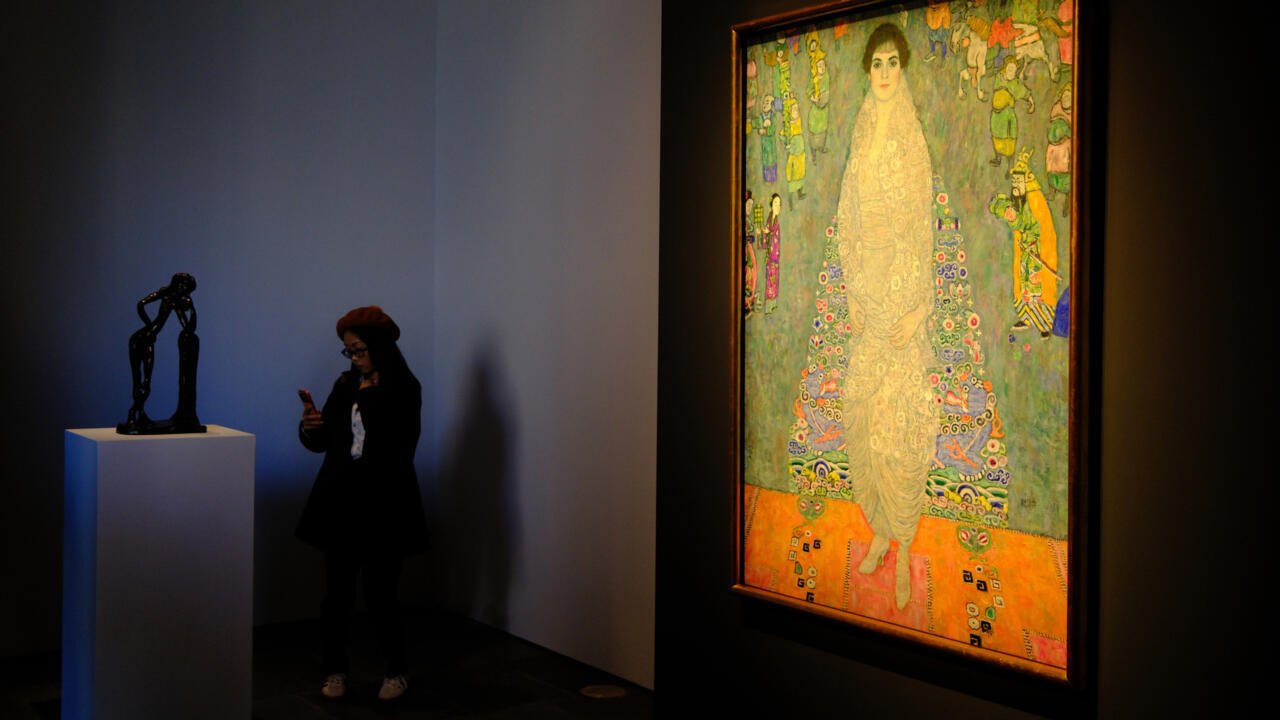Frida Kahlo’s 1940 self-portrait “El sueno (La cama)” sold for $54.66 million in New York on Thursday, Sotheby’s said, setting a record for the most expensive painting by a woman.
Issued on: 21/11/2025
By: FRANCE 24

A self-portrait by legendary Mexican artist Frida Kahlo sold for $54.66 million in New York on Thursday, setting a new record for the price of a painting by a woman, the auction house Sotheby's said.
The sale of Kahlo's 1940 artwork, titled "El sueno (la cama)" – which translates to "The dream (The bed)" – breaks the previous record in this category, set by American artist Georgia O'Keeffe, whose 1932 painting "Jimson Weed/White Flower No. 1," sold for $44.4 million in 2014.
Kahlo's painting is "the most valuable work by a woman artist ever sold at auction," Sotheby's said in a post on X.
The auction house said Kahlo's work was "painted in 1940 during a pivotal decade in her career, marked by her turbulent relationship with Diego Rivera".
Kahlo's self-portrait went on the auction block at Sotheby's with an estimated price ranging from $40 million to $60 million.
The buyer's name was not disclosed.
The artwork depicts the artist sleeping in a bed that appears to float among clouds in the sky, laying beneath a skeleton with legs that are wrapped with sticks of dynamite.
This painting is a "very personal" image, in which Kahlo "merges folkloric motifs from Mexican culture with European surrealism", Anna Di Stasi, head of Latin American art at Sotheby's, told AFP.
The Mexican artist, who passed away in 1954 at age of 47, "did not completely agree" with her work being associated with the surrealist movement, Di Stasi said.
However, "given this magnificent iconography, it seems entirely appropriate to include it" in this movement.
The record-setting sale came two nights the New York auction house reeled in another record sale, with a painting by Austrian artist Gustav Klimt fetching $236.4 million on the block – the second most expensive artwork ever sold at auction.
Klimt's "Portrait of Elisabeth Lederer," which he painted between 1914 and 1916, depicts the daughter of his main patron dressed in a white imperial Chinese dress, standing before a blue tapestry with Asian-inspired motifs.
The most expensive painting ever sold at auction remains the "Salvator Mundi," attributed to Leonardo da Vinci, which was bought for $450 million in 2017.
(FRANCE 24 with AFP)
A rare full-length portrait by Austrian painter Gustav Klimt sold for $236.4 million in New York on Tuesday, becoming the second most expensive artwork ever auctioned. The fiercely contested sale underscores surging demand for museum-calibre pieces as Sotheby’s prepares to offer a major Frida Kahlo work later this week.
Issued on: 19/11/2025 - By: FRANCE 24

A portrait by Austrian artist Gustav Klimt fetched $236.4 million in New York on Tuesday, becoming the second most expensive artwork ever sold at auction.
Six bidders battled for 20 minutes over the “Portrait of Elisabeth Lederer,” which Klimt painted between 1914 and 1916.
The piece depicts the daughter of Klimt's main patron dressed in a white imperial Chinese dress, standing before a blue tapestry with Asian-inspired motifs.
Sotheby's, which managed the sale, did not disclose the identity of the buyer.
The most expensive painting ever sold at auction remains the “Salvator Mundi,” attributed to Leonardo da Vinci, which was bought for $450 million in 2017.
“Full-length society portraits of this impressive scale and from Klimt's pinnacle period (1912–17) are exceptionally rare; the majority in major museum collections,” Sotheby's said of Tuesday's sale.
READ MORELost Claudel sculpture found in Paris flat fetches $3 million at auction
“The painting offered this evening was one of only two such commissioned portraits remaining in private hands,” it added.
For Klimt, the past auction record for his work was held by "Lady with a Fan", which sold for 85.3 million pounds ($108.8 million) in London in 2023.
On Thursday, a self-portrait by Frida Kahlo has a strong chance of setting a record for a female artist when it goes on sale, also at Sotheby's in New York.
Kahlo painting likely to break record for most expensive work by any female

01:22
Estimated at $40 to $60 million, the 1940 piece called "The Dream (The Bed)" shows the Mexican painter sleeping in a bed overshadowed by a large skeleton.
The most expensive painting by a female artist sold to date is a 1932 work by American Georgia O’Keeffe, which fetched $44.4 million in 2014.
The record for Frida Kahlo is another 1949 self-portrait, "Diego and I", which sold for $34.4 million in New York.
(FRANCE 24 with AFP)














